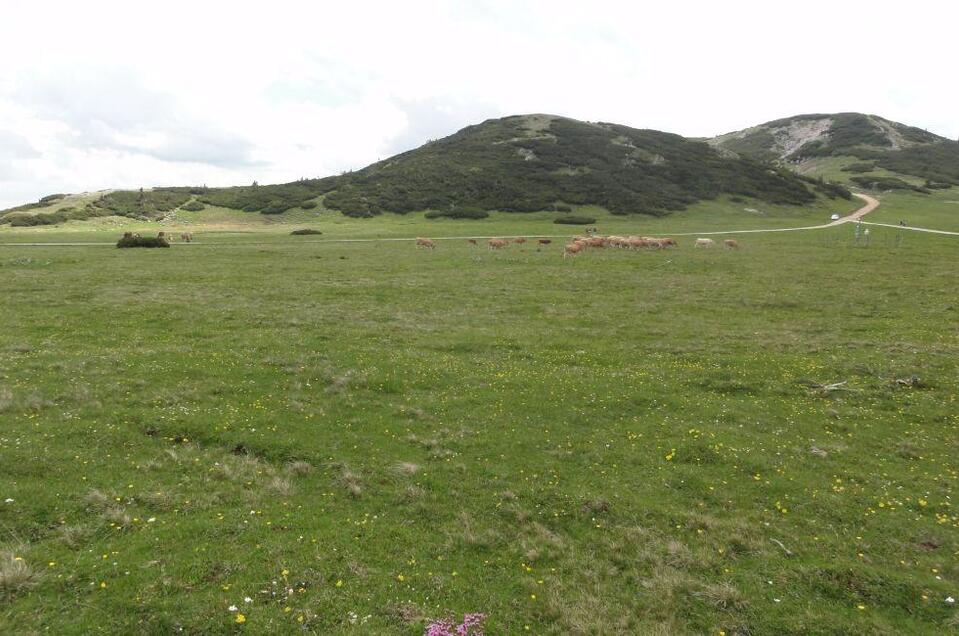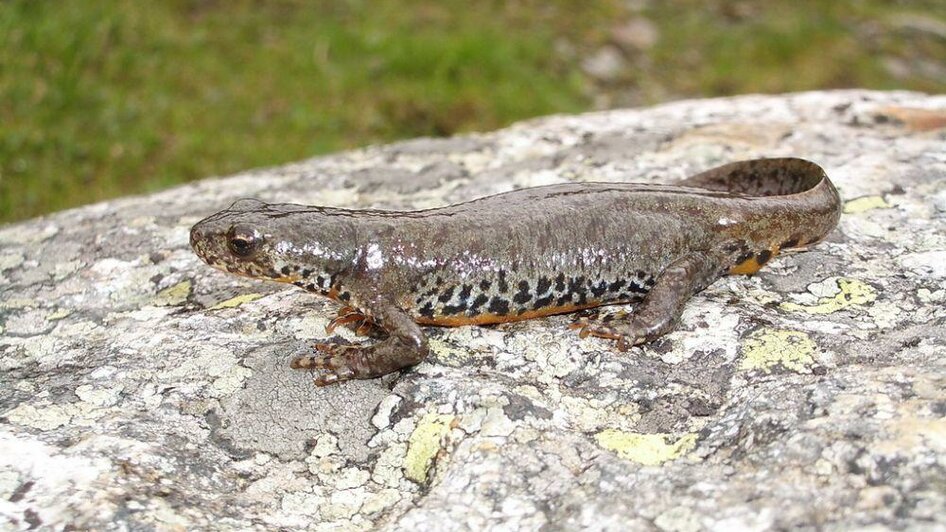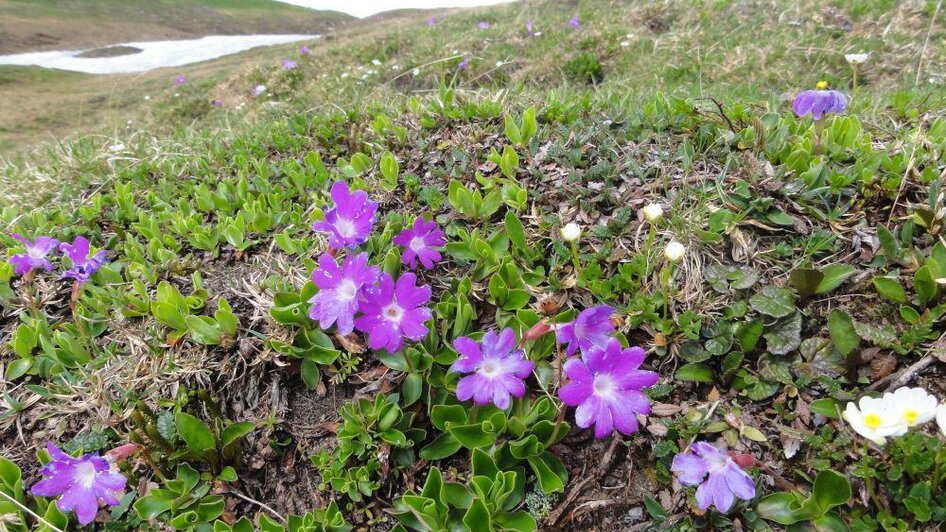Das Schneealmplateau
Neuberg an der MürzCurrent information
Nature jewels are special habitats in the cultural landscape, unique creations of nature and cultural-historical peculiarities.
In the 7 Styrian nature parks, there are a total of 27 nature jewels. All of these natural beauties are located along hiking trails, making them accessible on foot and free to visit. Of course, our nature and landscape guides are happy to accompany you and provide insights into the world of natural phenomena, the unique plant and animal life that has found its habitats in these places.
An overview of the Schneealm plateau
Landscape protection area 21 – Veitsch-, Schnee-, Raxalpe
Location
545497.0 E or 5283299.6 N
What3Words: ///striving.scaffold.economical
Altitude
1720 m – 1730 m
There are several ascents to the Schneealm plateau; here, only two are described:
- Karlgraben, parking lot at 1400 m
- Parking lot (1400 m)
- From Karlgraben: Starting from the southwest-located Karlgraben (780 m) with only a few parking spots, you ascend via the Karlgraben (hiking trail 441) to the plateau. This hiking trail leads over a steep path past Karlbrunn and south of Karleck to reach the plateau west of the Michlbauernhütte (3 hours – 5 km)
- The second option starts from the parking lot (1400 m) south of the plateau after the Michlbauer homestead. The path straightforwardly follows the alpine road from the south over the Kutatschhütte, entailing a small descent and ascent, up to the plateau (2 hours – 4.5 km)
Schneealpenhaus and Michlbauerhütte
May to September
difficult or easy
Flora and Vegetation
The central area of the Schneealm plateau between the alpine roads is dominated by nutrient-rich meadow areas. However, there are also patches of sparse meadow areas occurring in a mosaic pattern. Here thrive Alpine Meadow-grass (Poa alpina), Tufted Hairgrass (Deschampsia cespitosa), Alpine Yellow oat-grass (Anthoxanthum alpinum), Mountain Avens (Geum montanum), Trollblume (Trollius europaeus), Alpine Butterbur (Homogyne alpina) with its small, heart-shaped leaves that are white-felted on the underside, White Clover (Trifolium repens) and Knotted Persicaria (Persicaria viviparum).
The poorer the soil gets, the more the indicators of poor soils come into play: Calcareous Bluegrass (Sesleria caerulea), Sedge (Carex sempervirens), Cushion Sedge (Carex firma), Mourning Sedge (Carex atrata), Crantz's Cinquefoil (Potentilla crantzii), Woundwort (Anthyllis vulneraria), Alpine Buttercup (Anemonastrum narcissiflorum), Spring Gentian (Gentiana verna), Clusius Gentian (G. clusii), Motherwort (Mutellina adonidifolium) – a delicate member of the umbellifer family, Alpine Sea Thrift (Armeria alpina) – a leek-like leadwort, the pink-flowered Stemless Catchfly (Silene acaulis) – a cushion plant from the carnation family, and orchids such as the dark purple Austrian Black cohosh (Nigritella nigra subsp. austriaca).
These nutrient-poor sites are found in small areas in the central region, but especially on the surrounding slopes. Other orchids found here include White Helleborine (Pseudorchis albida) and Hollow Tongue (Coeloglossum viride), as well as Alpine Soldanella (Soldanella alpina) in depressions that are covered with snow for longer periods, Silverwort (Dryas octopetala), Alpine Buttercup (Ranunculus alpestris), the pink-flowered Alpine Carnation (Dianthus alpinus) – another cushion plant – and Austrian Alpine Snowbell (Soldanella austriaca).
Overall, the micro-relief is strongly pronounced, allowing the individual species with their varying requirements to settle nicely (ecological niche). The plateau is repeatedly bordered by mountain pine shrubland (Carbonate Mountain Pine Forest).
Fauna
The doline landscape of the Schneealm provides a variety of different locations, and thereby microclimatically distinct habitats for animals and plants in a somewhat confined space. Thus, spring and summer bloomers can be observed in close proximity during the same blooming phase. In the so-called Gläserkogelschacht, a shaft cave on a small mountain ridge, bone finds of elk (Alces alces) and bison (Bos bonasus) testify to former animal inhabitants. Larger animal species of the present day, which are sometimes only rarely seen, include the Golden Eagle (Aquila chrysaetos) and the Alpine Snowcock (Lagopus muta). Specifically, to observe a golden eagle, which possesses vast territories, requires sufficient luck or persistence. Its main prey are marmots (Marmota marmota), but also young deer (Capreolus capreolus) and chamois (Rupicapra rupicapra) as well as grouse like the snowcock.
Chamois (Rupicapra rupicapra) are numerous. Frequent mountain residents of the bird fauna include Meadow Pipit (Anthus spinoletta), Tree Pipit (Anthus trivialis), and Alpine Chough (Pyrrhocorax graculus). A special feature in alpine habitats is the hidden living Birch mouse (Sicista betulina).
More noticeable mountain animals are the Alpine Bush-cricket (Pholidoptera aptera) and the Alpine Clouded Yellow (Colias phicomone). Smaller water bodies serve as important developmental waters for amphibians and smaller water dwellers. In addition to the Common Frog (Rana temporaria), the Alpine Salamander (Ichthyosaura alpestris) is also abundant. This nearly 10 cm long amphibian migrates to the breeding waters early in the year and remains there until early autumn.
Both the adult animals and the clearly smaller, gill tuft-equipped larvae can be well observed from the shore. The adults can be distinguished from other newt species by their bright orange belly. In the alpine grasslands of the high plateau live specialized invertebrates such as the subendemic Styrian Mountain Weevil (Dimorphocoris schmidti), the endemic Austrian Heath Snail (Helicopsis striata austriaca), and the Cylinder Rock Snail (Cylindrus obtusus).
All species are of the highest nature conservation relevance. They are cold-adapted species that lived in the area even between the ice ages and can survive today in alpine biotopes. Climate change with the loss of alpine open land at the expense of mountain forests poses an expected threat to these species. Also significant are the population of the Lesser Mouse-eared Bat (Myotis blythii) and a (former?) occurrence of the extremely rare and strictly protected Gold-striped Glider Beetle (Buprestis splendens), a relict species of primeval forest.







